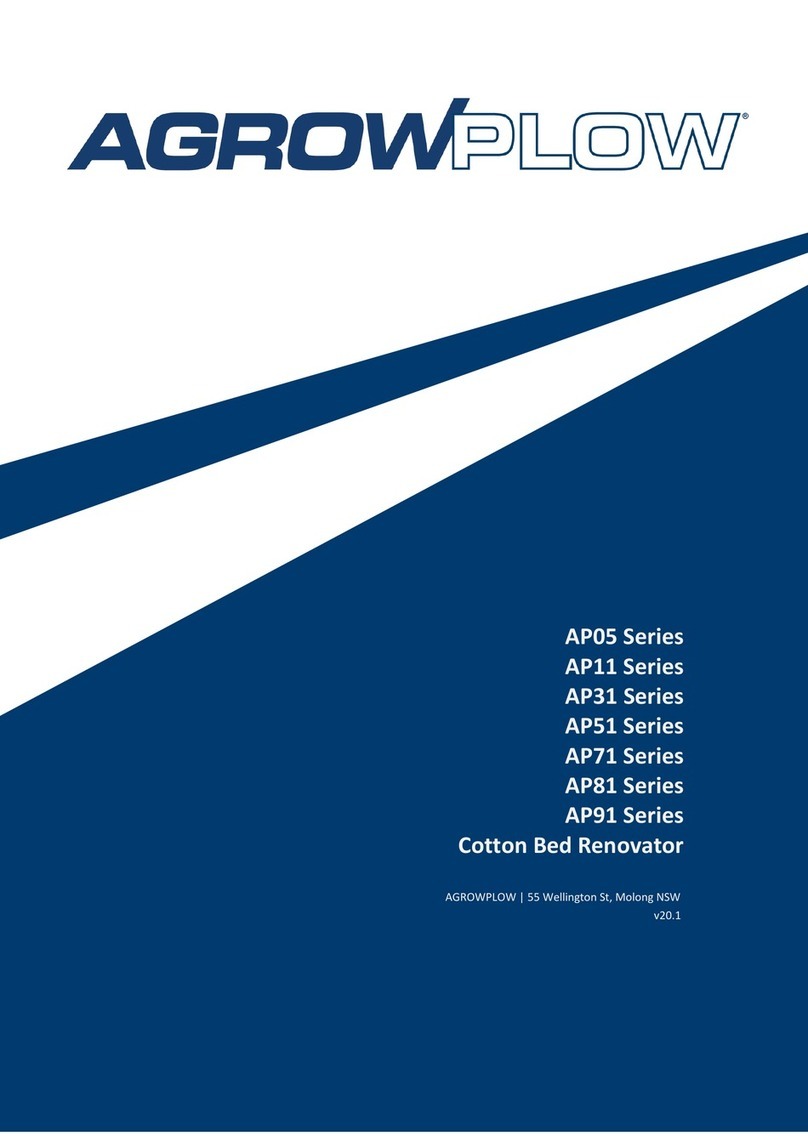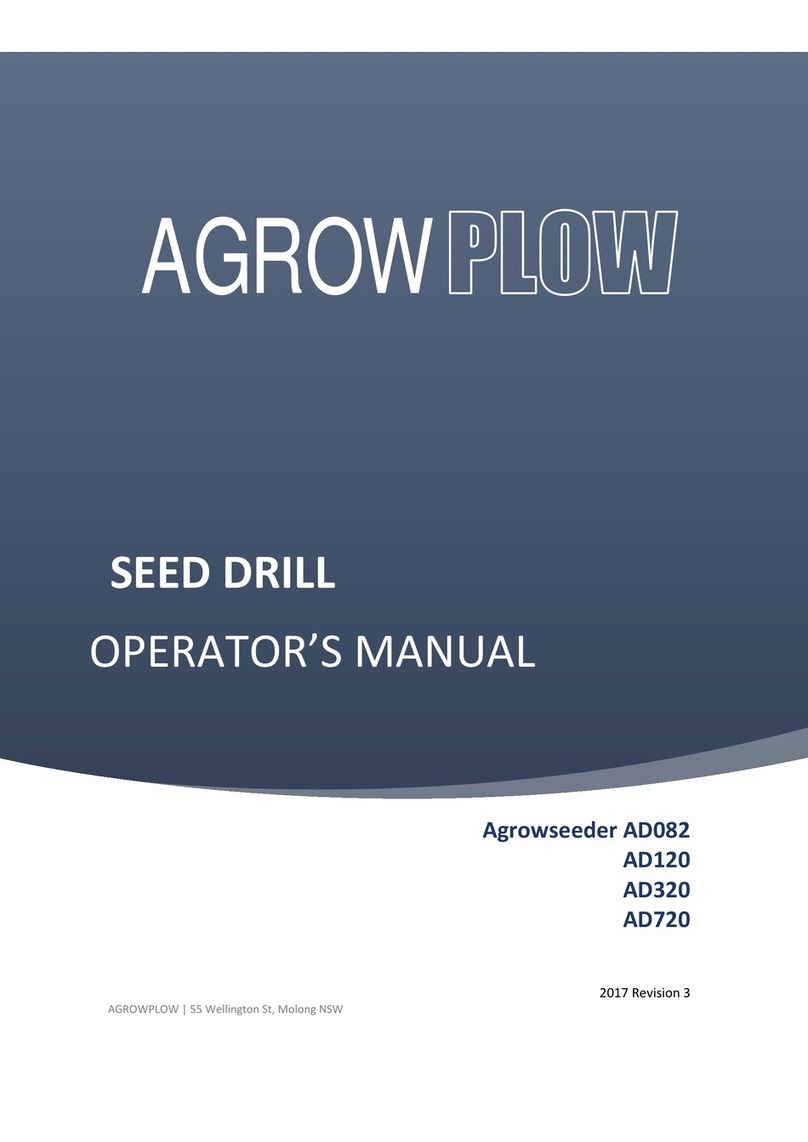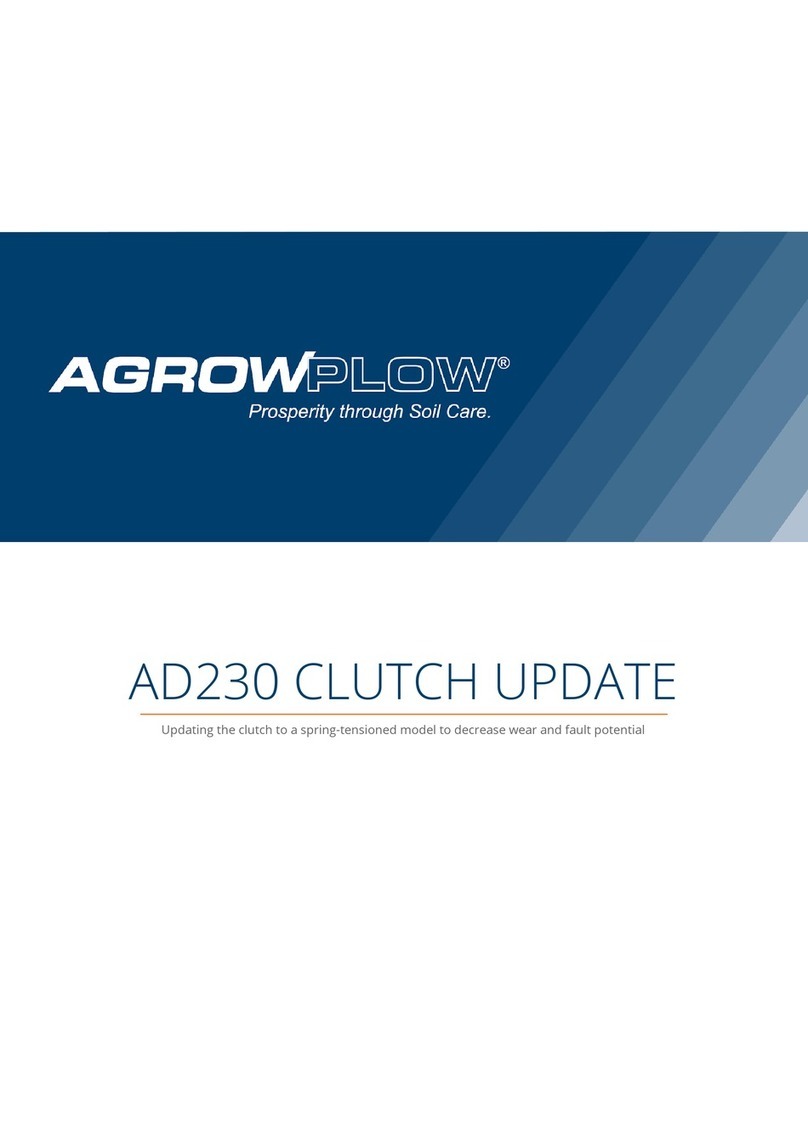
A g r o w p l o w O p e r a t o r s M a n u a l P a g e | 7
Warranty Policy
Agrowplow warrants to its Dealer, who in turn warrants to the purchaser, that each new Product, part or accessory
will be free from defects in material and workmanship for 12 months after delivery and installation by an Agrowplow
Dealer, according to the conditions outlined.
This warranty is in lieu of all other warranties (except those of title), expressed or implied, and there are no
warranties of fitness for the particular purpose. In no event shall Agrowplow be liable for downtime expenses, loss of
machine use, loss of crops, loss of profits, injury or damage arising from accident, direct or indirect loss, or other
incidental, consequential or special damages.
The Safe Use Inspection (SUI) and Pre Delivery Inspection (PDI) Forms must be filled in and returned to Agrowplow by
the Dealer or Agrowplow representative within seven days of delivery and installation of the unit. By signing the SUI
& PDI Forms, the owner acknowledges that he is responsible for the safe operation of the product, and that he
undertakes to fully train any person that might operate the product. Only when the Warranty Registration is
completed and returned can Agrowplow fulfil all warranty obligations.
Conditions of Warranty
In the event of a defect which may result in a warranty claim:
The Owner must provide the Authorised Dealer with written notice of the defect within 14 days of its
occurrence, and allow reasonable time for replacement or repair.
At Agrowplow’s request the Dealer will ensure any failed parts are freighted to the Agrowplow factory.
Freight costs will not be covered by Agrowplow. Transportation of the Agrowplow product to the Authorised
Servicing Dealer for warranty work is the responsibility of the Owner.
The Warranty is not transferable to any third party or subsequent purchaser.
Components and conditions not covered by warranty include:
Abuse
Failure resulting from neglect, improper operation, lack of required maintenance or continued use of machine after
the discovery of a defect which results in greater damage to the unit.
Environmental Conditions and Application
Deteriorated or failed components such as hydraulic hoses, seals, valves or connections damaged by corrosive
materials, dirt, sand, excessive heat or moisture. Warranty determination for these types of failures will be made by
Agrowplow only after inspection of failed components.
Normal Wear
Normal wear and consumable items such as oils and lubricants, nuts, bolts, washers, grease caps, spanners, jacks,
bearing housings, axles, poppet valves or seal kits for hydraulic cylinders, seals, points, discs, axles, tyres, machine
adjustment and periodic service. These are considered to be normal wear items and are not warranted.
Maintenance
Component failure caused by non-performance of scheduled maintenance such as correct lubrication and
maintenance, tightening or replacement of bolts, nuts, fittings, shields and covers.
Damage
Damage or machine failure caused by carelessness, accidents, improper operation, inappropriate transportation or
storage of the machine, parts or attachments.






























